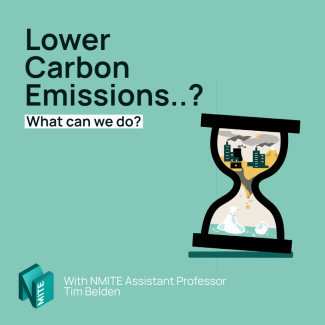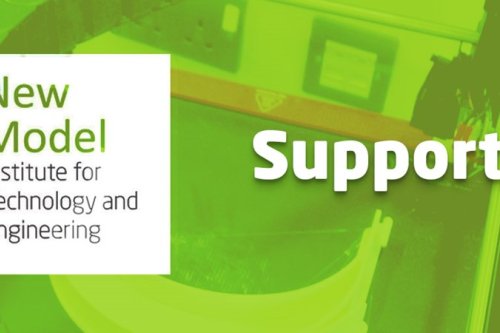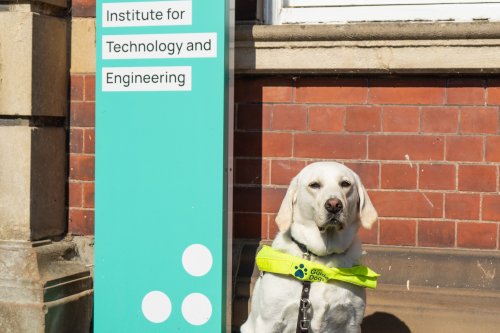It's no secret that the UK is currently hosting the 26th UN Climate Change Conference of the Parties (COP26) in Glasgow. In brief, the COP26 summit will bring parties together to accelerate action towards the goals of the Paris Agreement and the UN Framework Convention on Climate Change. In light of this and in recognition of This is Engineering Day, NMITE Assistant Professor for Digital Engineering, Tim Belden, speaks of the need for us all to lower our carbon emissions.
The United Nations environment programme reports, “new national climate pledges combined with other mitigation measures put the world on track for a global temperature rise of 2.7°C by the end of the century”, but goes on to say that if the current pledges are effective then that figure could be closer to 2.2°C. This highlights that so far, worldwide, we haven’t managed the speed of implementation to get us to the original 1.5°C, which was the Paris climate agreement figure. One single magic bullet will not reverse the situation. A combination of mitigation, to reduce, or better still eliminate, CO2 emissions and adaption to the changes that are occurring are clearly required.
What can we do to mitigate our emissions?
Being aware of our energy use is the first important step to realising where reductions might be made. Tracking this usage can be as simple as writing down which appliances we are using and for how long, the power used can then be calculated. Alternatively, a smart meter in the home will help to track usage and costs, although this alone will not reduce consumption. The next step, and arguably the most important one, is to work out how reductions can be made, based on the meters monitoring.
For the home, this could be as simple as turning the heating down a few degrees and wearing another layer of clothing. For business, this could be a reworking of the logistics side of the company. Many challenges in relation to emissions demand a different approach, which is perhaps why the overall progress in our approach to reduction is slow.
Part of the dilemma is balancing upfront financial cost of undertaking the study, and implementing the solutions, against the reduction in emissions. This is often made more difficult because the background data for comparisons is not widely available.
At NMITE, our new Centre for Advanced Timber Technology will become a living lab to help address some of these issues. The timber envelope of the building will be fitted with sensors to collect data about how the building performs. This can then be compared to performance predictions, based on the modelling done in the design phase. The difference here is that this will be data captured from a building in use over a long-term study, rather than data captured in a short laboratory trial, or factory setup. This iterative feedback loop will then inform future designs. The data will be made available to students, to inform their teaching.

What will adaption look like?
Adaption is harder to predict, as the amount of adaption is fundamentally tied to the amount of reduction we can achieve. The less reduction we achieve over the coming years, the greater the adaption that will be necessary. Very hot weather contrasting with very intense rainfall, have already shown they cause severe problems across many parts of the globe.
One certainly imagines working from home and buying local, but on a scale greater than that seen at the height of the pandemic. A greater understanding of the interaction between buildings and infrastructure materials and climatic changes will be key. As will be reshaping the way we produce the things we need to live, from packing through to transport.
Our current MEng Integrated Engineering students, NMITE's Pioneer Cohort, are engaged in a multidisciplinary, hands-on programme of study, so they are equipped to rise to this challenge and tackle future problems.
Learn more about NMITE's stand-out approach to engineering education by clicking here.






